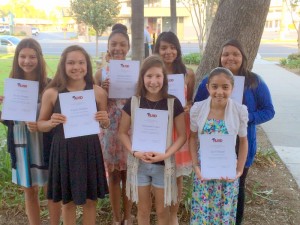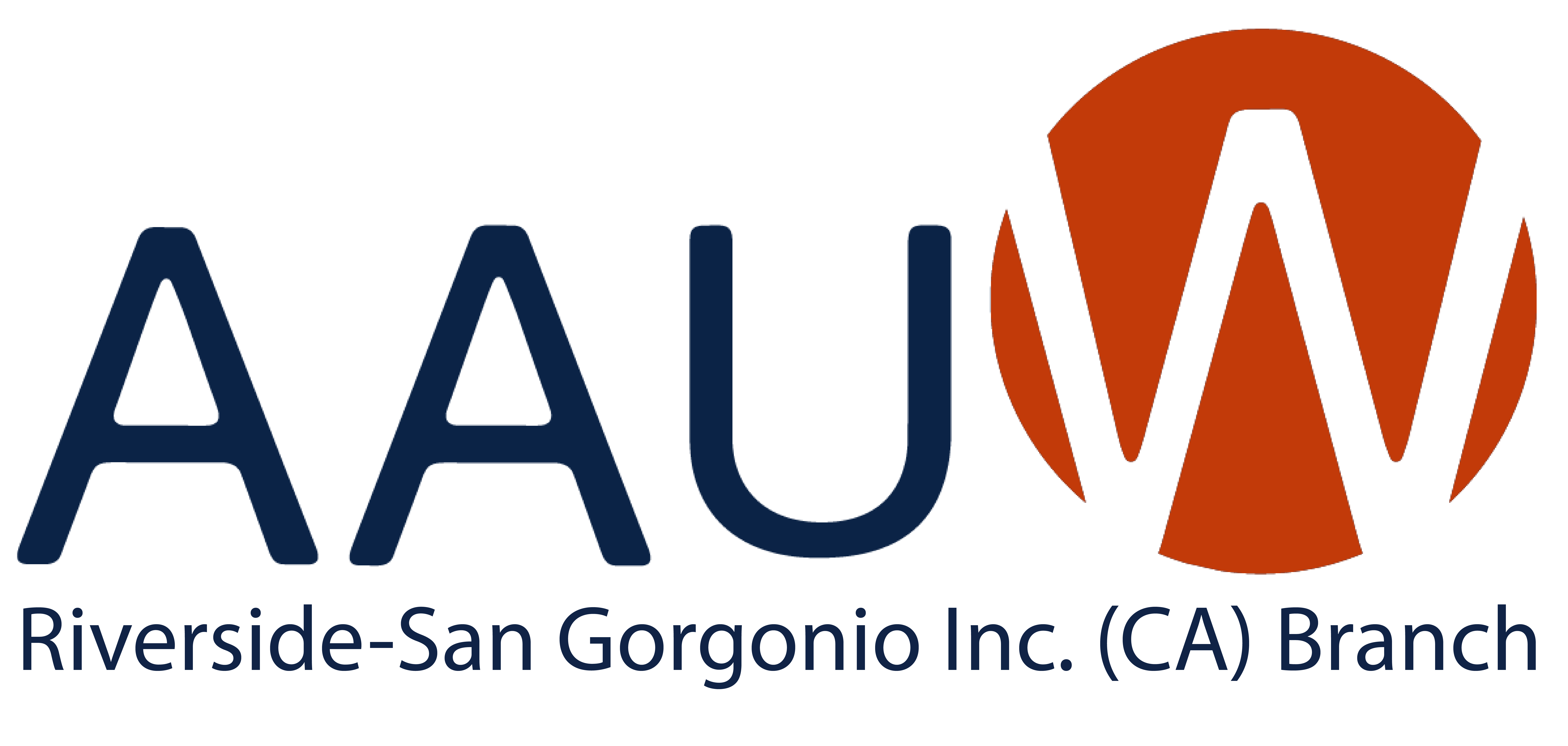
BACK ROW: Nicole Skaggs (Earhart), Jazmine Davis (Miller), Carmen Sanchez (Gage), Marisil Chavez (Central)
FRONT ROW: Angela Saldana (Earhart), Alexandra Lopez (Chemawa), Lia Villarreal (Central)
These seven Riverside girls were honored by the Riverside Board of Education in May. The two Moreno Valley girls will be honored later by the Moreno Valley School Board.
A Tech Trek Experience By Carole Nagengast
Tech Trek may sound a little wonky but in fact Jo Turner and I spent a fascinating day observing and participating in the Tech Trek summer camp experience at University of California, San Diego. Tech Trek is a weeklong series of intensive classes in science and technology classes taken by some 100 middle school girls lucky enough to be selected and funded. Riverside AAUW sponsors nine such young women who live in university dorms and take advanced classes in Chemistry, Physics, Anatomy, Marine Biology and Robotics. Two of our girls were at UCSD and the others at a similar camp at Whittier College.
After arriving, we found our way to the dorms and were able to see where the girls live: four double bedrooms surrounding a common living space make up a pod. It was very cozy- teddy bears, posters on the wall, and jackets on the backs of chairs. Each pod has a volunteer dorm mom (retired teachers, mostly) who is responsible for the well being of her eight 12-13 year-old girls. The students have breakfast and dinner close to the dorm, and lunch at a different dining hall close to the classrooms on the other side of the campus. They have full access to campus amenities, including the swimming pool, gym and other recreational facilities. So, not only do they have advanced classes in scientific and technical studies, they get to experience university life, something that may be completely foreign to some of them.
We managed to spent a little time in four of the five classes students take; we missed robotics since it is held off campus. Each class had approximately 20 students and at least one junior counselor who assists the teacher. Other junior counselors help in a variety of ways, including driving staff in a golf cart from dorms to classrooms to dining halls on the huge campus. Our driver told us that most junior counselors were Tech Trek grads and were both “giving back” and learning teaching techniques. She had just graduated high school and was off to Georgetown University’s pre-med program in August. Now there’s a success story!
We spent the most time in the Marine Biology class. There were jars of sea animals (sharks, starfish) and parts thereof preserved in formaldehyde on the desk. Some of the students were doing a simulated measurement of the bottom of the ocean floor, using cardboard cartons, with a variety of platforms glued inside, out of sight; the top was sealed and had evenly spaced holes poked into rows and columns. The students used knitting needle-like devices with regularly engraved intervals to measure how deep each hole was. They then marked on a graph the location and depth of each hole. In the end the students created 3-D graphs of “the bottom of the ocean” by cutting and pasting a series of their charts. Another small group was outside tie dying fabric shades of blue to be used in constructing a back drop for the ocean floor. This messy job was not going so well and the teacher implied she would rethink techniques. (This was the first day of class).
In Anatomy, students were getting ready to dissect a fetal pig and the instructor was lecturing on the anatomy of the eyeball and orbit and explaining what was known about diseases of the eye. In order to demonstrate how disabling cataracts, and presbyopia (a condition of aging eyes) are, students were smearing various amounts of Vaseline on sunglasses and trying to read the ingredients on a food package or imagining they were trying to drive. They were brainstorming about other daily activities that would be difficult for people with cataracts.
In Chemistry, the teacher was discussing neutrons and protons and the various characteristics of each. I asked her afterwards if this was typical curriculum for 8th grade students and she laughed and said, “No, this was typical high school chemistry.” Her husband contributes the teaching aids he uses to teach juniors and seniors. When we left, the students were about to do an activity involving gathering and assessing data from a number of experimental stations set up around the room.
In Physics, students were learning about the ways different types of glaciers affect earth. Lunch was called at this point, so we did not have enough opportunity to observe this class. Unfortunately logistics required that we miss afternoon classes.
I would not have missed this visit for the world. I cannot tell you how impressed I was with the young women, the teachers, the counselors, the dorm moms and indeed the entire program. In addition to providing some $950 in tuition and fees for each of our nine girls, we in the Riverside AAUW might consider mentoring these students for the entire year. There are many activities we could plan for them: an annual lunch, museum trips, a visit to a regular college classroom (arranged through members who are active faculty); just meeting with them one on one. If people think this is a good idea, count me in.
